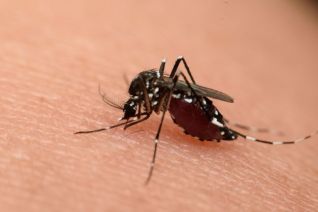Toolkits

Pandemic Influenza
An influenza pandemic is a global outbreak of a new influenza A virus. Pandemics happen when new (novel) influenza A viruses emerge which are able to infect people easily and spread from person to person in an efficient and sustained way. The United States is NOT currently experiencing an influenza pandemic. There is an ongoing pandemic with a new coronavirus. CDC influenza programs protect pdf icon[1.1 MB, 2 pages, 508] the United States from seasonal influenza and an influenza pandemic, which occurs when a new flu virus emerges that can infect people and spread globally.

Flu Season
Influenza (flu) is a contagious respiratory illness caused by influenza viruses that infect the nose, throat, and lungs. Some people, such as older people, young children, and people with certain health conditions, are at higher risk of serious flu complications. There are two main types of influenza (flu) viruses: Types A and B. The influenza A and B viruses that routinely spread in people (human influenza viruses) are responsible for seasonal flu epidemics each year.
The best way to reduce the risk of flu and its potentially serious complications is by getting vaccinated each year.

Flooding
Floods, big or small, can have devastating effects on your home and your family. You can take steps to reduce the harm caused by flooding. Learn how to prepare for a flood, stay safe during a flood, and protect your health when you return home after a flood.

Swine/Variant Influenza
Swine influenza is a respiratory disease of pigs caused by type A influenza viruses that regularly cause outbreaks of influenza in pigs. Influenza viruses that commonly circulate in swine are called “swine influenza viruses” or “swine flu viruses.” Like human influenza viruses, there are different subtypes and strains of swine influenza viruses. The main swine influenza viruses circulating in U.S. pigs in recent years have been, swine triple reassortant (tr) H1N1 influenza virus, trH3N2 virus, and trH1N2 virus.

Zika
Zika virus was first discovered in 1947 and is named after the Zika Forest in Uganda. In 1952, the first human cases of Zika were detected and since then, outbreaks of Zika have been reported in tropical Africa, Southeast Asia, and the Pacific Islands. Zika outbreaks have probably occurred in many locations. Before 2007, at least 14 cases of Zika had been documented, although other cases were likely to have occurred and were not reported. Because the symptoms of Zika are similar to those of many other diseases, many cases may not have been recognized.

